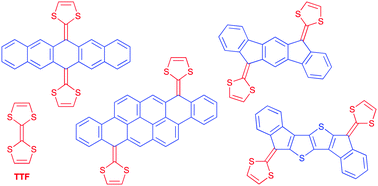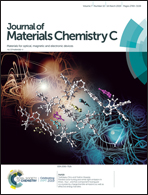Extended tetrathiafulvalenes with polycyclic aromatic cores
Abstract
Redox-active organic molecules have found interest in various areas of materials chemistry, from organic conductors, electrochromic materials, sensors, to constituents of molecular machines. Tetrathiafulvalene (TTF) has been one of the most exploited molecules for advanced materials owing to its two reversible one-electron oxidations. Polycyclic aromatic hydrocarbons (PAHs) are another class of organic molecules that has played a unique role in materials chemistry on account of their electronic properties. By combining TTFs and PAHs new electronic properties emerge. Indeed, an extension of the TTF by a large π-conjugated spacer between the two dithiole rings has significant implications for the redox properties, the optical properties of the various redox states, and the ability to form mixed valence and π-dimer associates upon oxidation; i.e., neutral·radical cation (nc) and radical cation·radical cation (cc) complexes. Here we review the properties of such extended and “super-extended” TTFs, divided into two classes based on the nature of the spacer: (i) one- and two-dimensional PAH spacers comprised of fused benzene rings, (ii) indacene- and benzo- or thieno-fused indacene spacers where the dithiafulvene units are placed at five-membered rings in the spacer. The two classes will be limited to structures where the exocyclic fulvene carbon atom of each dithiafulvene unit is part of a five- or six-membered all-carbon ring (while heterocyclic rings may be fused to this ring). Digital simulation of the experimental cyclic voltammograms is key to understanding the complex associations occurring upon oxidation, and the last part of the review gives a small tutorial on this method.

- This article is part of the themed collection: Recent Review Articles


 Please wait while we load your content...
Please wait while we load your content...